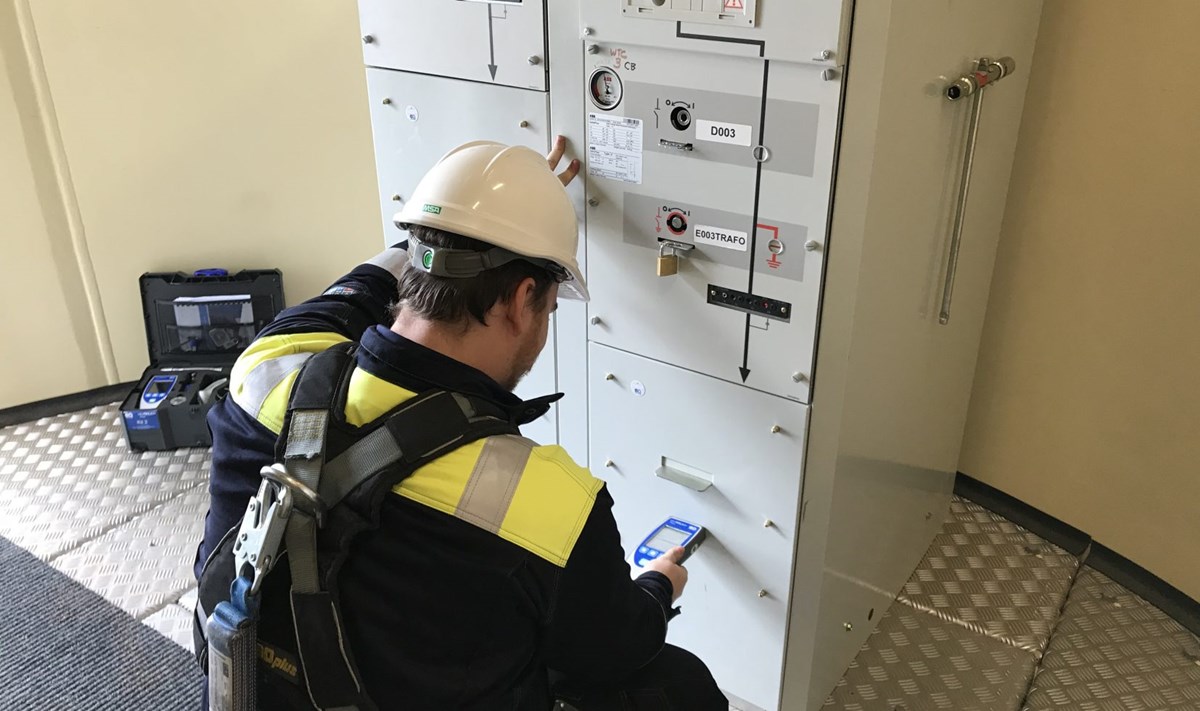Blog: What is Partial Discharge? A Guide to Understanding and Managing PD
-
05 September 2019
-
Neil Davies

This guide to partial discharge aims to answer three questions:
-
What is partial discharge?
-
What are the different types of partial discharge?
-
What detection techniques can be used for partial discharge?
If you have any more PD-related questions, just get in touch.
What is partial discharge?
Partial discharge (PD) happens when a small area of insulation in a high voltage environment cannot cope with the electrical stress and breaks down. It doesn’t span the whole distance between two insulated electrodes – that’s why it’s called ‘partial’. Partial discharge might be small in size, but it does cause insulation to deteriorate over time, which will ultimately lead to failure. If left unchecked, insulation failure can result not only in loss of supply to processes or customers but can also endanger staff. The image shows how PD emits energy. Non-intrusive instruments use the electromagnetic and ultrasonic emissions to detect problems. However, when entering a substation, you should always use your own senses. Look for signs of stress, smell for ozone, listen for audible crackling from within switchgear. Any of these indicators can be a sign of severe PD and an unsafe environment.
What are the different types of partial discharge?
PD can be classified into 3 main types:
- Internal PD, occurring inside insulation
- Surface PD, tracking across insulation
- Corona PD, from a sharp electrode into gas
Internal PD is the silent defect where there will be no sound, smell or visual indication of a problem prior to failure. If you witness the aftermath of a compound insulated cable box failure, you will see how the build-up of pressure can lead to a very disruptive and dangerous explosion. Surface PD occurs across the surface of insulation. When alternative materials to porcelain started to be introduced into switchgear and dry terminations started being widely introduced, some critical aspects of design and installation were not fully appreciated. This led to a spike in failure rates due to surface PD. When developed, it will produce the crackling and ozone smell. Corona PD is what we often hear in outdoor switchyards, particularly when humid. Corona at sharp points in switchyards isn’t usually detrimental. However, if corona activity occurs inside enclosed chambers and there is no airflow to remove chemical reactions, then it can lead to the onset of surface PD and problems.
What detection techniques are available for partial discharge?
When detecting PD in HV switchgear, it is much easier if we can do this live without interfering with supply. The most practical ways revolve around detecting different radio frequency signals.
- Using a combination of sensors ensures different types of PD can be readily identified. PD generates Transient Earth Voltages (TEV) – high frequency electromagnetic pulses. TEV signals travel across the inside surfaces of switchgear, escaping to the outside through openings in the metalwork e.g. gaskets. PD activity can be detected by placing a TEV sensor on the outside of the switchgear to measure these pulses.
- TEV methods are particularly effective at finding internal PD. Acoustic emissions from PD activity are normally at a frequency too high for the human ear, i.e. ultrasonic. As the PD gets worse, the frequency sometimes decreases into the audible range. Using an airborne ultrasonic microphone is the most sensitive way to detect PD where there is an air path between the source and the microphone. Contact ultrasonic sensors can be used for sealed chambers.
- Ultrasonic methods are particularly effective at finding surface PD and corona PD.
Learn about Partial Discharge Monitoring
Failure of your high-voltage switchgear and cabling could cost millions in repairs, replacements and fines. But most failures don’t happen in a flash – they can be predicted from warning signs, most notably partial discharge (PD). By watching your cables and switchgear, EA Technology’s Astute HV Monitoring® service can alert you to suspicious spikes and pinpoint which parts of your HV system should be investigated.
Download an information kit today that’s packed with information, including case studies, technical specifications, case studies and service information.
Download our Information Kit: